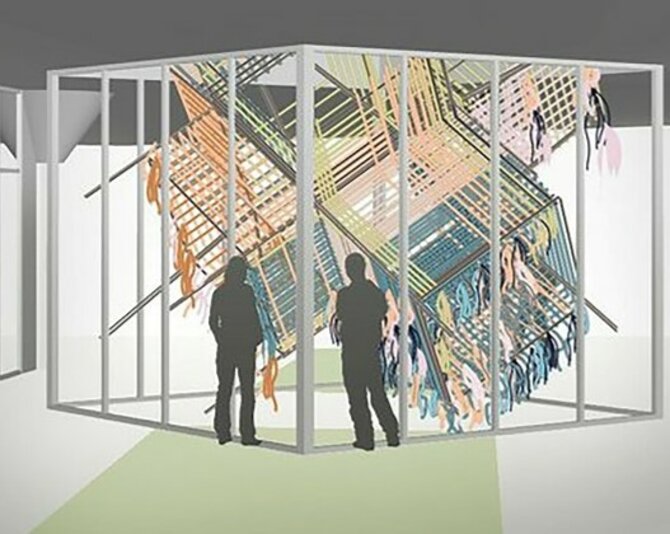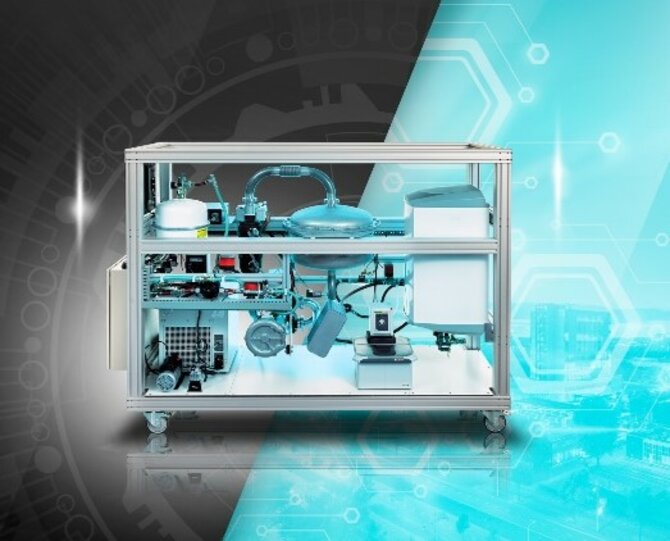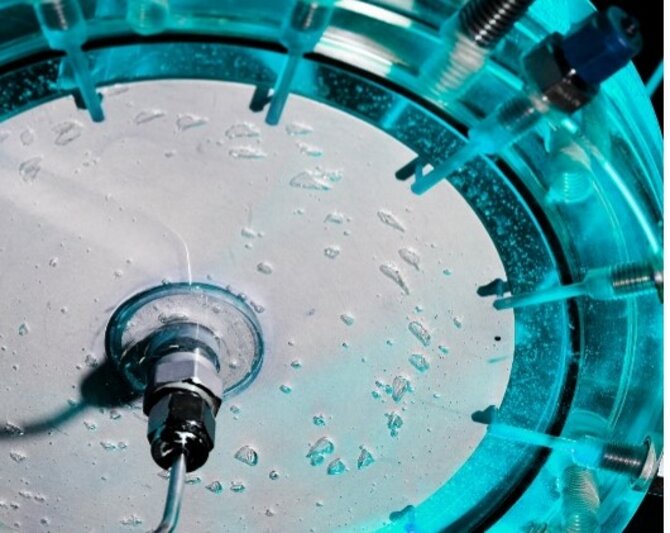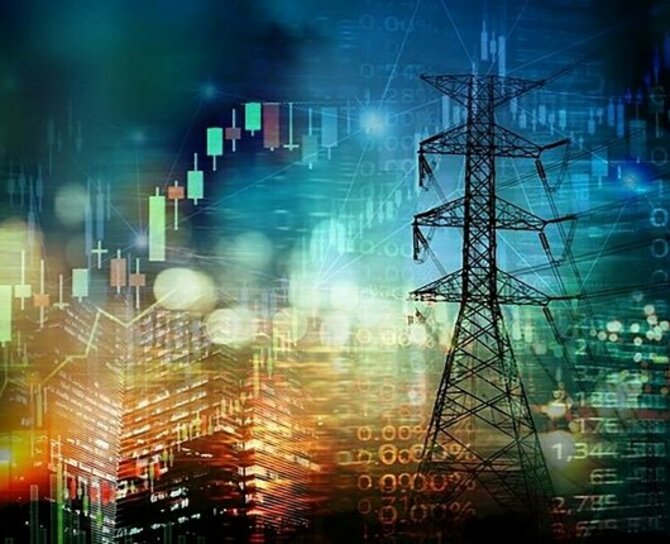TU/e Sustainability Fund
This fund supports research and projects that focus i.a. on the consequences of our large-scale use of fossil fuels and reversing them. Such as new forms of energy or accelerating the energy transition.
These are some of the projects that are eligible for funding:
Green hydrogen balances the grid
In the future, most of our energy will come from renewable resources, such as wind. But when the wind doesn't blow, the supply falters. The Netherlands wants to generate between 38 and 72 gigawatts of offshore wind energy by 2050. But our grid can only handle 20 gigawatts. Two hitches that could disappear thanks to the research of Donsheng Yong, Assistant Professor at Electrical Energy Systems.
The optimal balance on our grid requires a stop between generation and use. According to Donsheng, that is green hydrogen, generated from the energy of offshore wind farms. It is easy to store and suitable for electricity generation later. But it can also be converted into other fuels for cooking and/or heating. This is just one of the projects around hydrogen that will change our energy landscape forever and for the better.
Sustainable renovation thanks to artificial intelligence
Houses built between 1945 and 1990 give municipalities and housing associations headaches. There are many of them and they have little or no insulation. And if they are, insolated the materials used are outdated or even decayed. How can we make them sustainable cost-efficient and how can we do that as fast as possible? That was the question facing Lisanne Havinga during her PHD on post-war housing in Amsterdam.
She devised De Rekenkern light (The calculation core light): software running on a supercomputer that calculated the best sustainable renovation for these problem houses. The results were groundbreaking: only one day's work was needed per dwelling. Now she wants to upgrade the light version to a system that does the same for the rest of the Netherlands.


The much-needed evolution of batteries
Anyone who ever checks the status of a cell phone battery can see for themselves the drawbacks of conventional batteries: they wear out. By shrinking and expanding, they lose capacity with each charge cycle. In addition, they rely on rare materials for production that are not particularly environmentally friendly. Another disadvantage: they are not suitable for large-scale storage. In short: batteries need to get better and smarter.
This is also the opinion of Antoni Forner-Cuenca, Assistant Professor of Chemical Engineering at TU/e. He is working on various methods to make batteries more efficient, wear-resistant, and more widely applicable. His work is a delicate interplay between materials science, electrochemical engineering, and surface science, among others. He is currently working on several electrochemical technologies, including fuel cells, electrolyzers and redox flow batteries. Important research that will pay dividends in the long run, but for now requires investment above all else.
The electrolyzer of the 21e century
Electrolysis, the method of splitting water molecules into oxygen and hydrogen, has attracted renewed interest in recent years. This is not only because of rising gas prices, but also, of course, because we no longer want to be dependent on fossil fuels. Hydrogen is made with an electrolyzer, a device that has been virtually unchanged for decades. That's because we don't know exactly how it works. And without that knowledge, it is difficult to look for points of improvement.
Thijs de Groot, Assistant Professor of Chemical Engineering and Chemistry, is researching alkaline electrolyzers for large-scale hydrogen production. He wants to make them more efficient by designing new materials for electrodes and membranes. Part of the secret of the electrolyzer, he says, lies in the bubbles created when hydrogen is generated. They drive the process but also sabotage it. Deciphering that paradox is one of his goals. Achieving that requires funding for his disruptive methods.


Better materials for better solutions
Following on from Thijs de Groot's project is the work of Diletta Giuntini (Mechanical Engineering). She conducts research on ceramic and mixed polymer-based ceramic materials. Dilletta's work is largely invisible, but of no small importance. The resulting materials help optimize processes around generation and storage.
They reduce or even nullify the limitations of the versions used so far. The materials that can be assembled thanks to her are finding their way into several innovations. For example, we are used to make electrolyzers more efficient and different types of batteries hold energy better and longer. But also, to develop coatings that minimize friction making turbines more powerful.
Underground storage of gases and substances
There is a topic that comes up regularly when it comes to sustainability: the storage of mainly CO2 in underground spaces, such as salt caverns. Using those spaces is interesting because it's going to give us the space to take full advantage of periods when we can produce a lot of hydrogen, for example. We then store the excess production underground to take it out when production slows down or comes to a halt.
The principle sounds simple, but each space has its own specific properties, such as pressure, temperature and, of course, its contents, for example, salt and moisture. Those substances that can start to react with the stored material. And, of course, nothing should leak or escape.
Maja Rücker (Mechanical Engineering) uses numerical models and experimental methods to investigate how different gases and liquids behave in porous spaces. Her work will help us to make safe choices later and optimize the processes surrounding storage.

